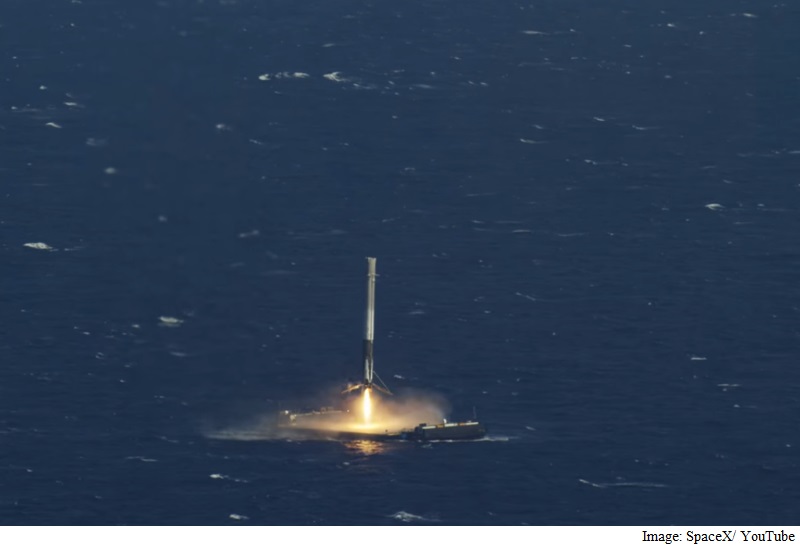What SpaceX’s Landing Means for Commercial Space Travel

They tuned in by the tens of thousands, crowding around their screens the way residents of the Florida Space Coast once jammed the beaches to witness rocket launches at the dawn of the Space Age.
But the audience watching SpaceX’s live web broadcast of its launch from Cape Canaveral on Friday was treated to a show that until just a few years ago was widely discounted as impossible – the vertical landing of the Falcon 9 rocket, which used its engine thrust to slow down and touch softly on a boat in the Atlantic Ocean.
On Sunday morning, SpaceX’s Dragon spacecraft caught up to the International Space Station. Flying at 17,500 mph, the spacecraft pulled up alongside the orbiting laboratory, and at 7:23 a.m., European astronaut Tim Peake grabbed it using a robotic arm.
“It looks like we caught a Dragon,” he said.
While the main mission was to deliver food and cargo to the station, it was the landing at sea that was hailed as a breakthrough.
President Barack Obama, whose administration followed through with controversial plans to retire the space shuttle and contract out missions to the space station, tweeted his congratulations. And employees at SpaceX, which earlier had made four unsuccessful sea landing attempts, went wild, thrilled at pulling off yet another feat.
Buzz Aldrin cheered on SpaceX. So did Lori Garver, a former Nasa deputy administrator who helped spearhead the effort within the agency to help stand up a new commercial space industry by awarding lucrative contracts to help companies develop their spacecraft.
They understood the significance of the landing for the commercial space industry: that being able to recover rockets – instead of discarding them into the sea, as was the practice for decades – could help to dramatically lower the cost of spaceflight and eventually open it up to the masses. In December, SpaceX landed its first stage on a landing pad it had built at Cape Canaveral.
But this time, the event – and that extra bit of daring by landing it on a boat – reverberated well beyond the space community. Actress Mia Farrow and director Jon Favreau tweeted their congrats. On her MSNBC broadcast, Rachel Maddow started off the segment by saying, “So here’s an incredible thing that happened today. You just kind of have to see it. It’s amazing.”
Other journalists were publicly rooting for the achievement, just as Walter Cronkite did while watching John Glenn become the first American to orbit the Earth in 1962. “Go, baby!” he cheered during the CBS broadcast, as the rocket soared into the sky.
Years later, he would say he “dropped my impartiality for a moment. Well, it just burst out.”
The launch to the space station was SpaceX’s first since its Falcon 9 rocket blew in June. While the company investigated the failure, its rockets were grounded for months. Now it has a lot of catching up to do to work through a backlog of commercial and government launch orders. At a news conference after the launch on Friday, CEO Elon Musk said SpaceX plans to launch every two to three weeks later in the year.
And it will continue to try to perfect the art of the first-stage landing, either on the drone ship, as it calls its autonomous boat, or at its landing zone on the cape.
“We’ll be successful, ironically, when it becomes boring,” Musk said. “When it’s like, ‘Oh, yeah, another landing. No news there.’ ”
Later this year, SpaceX also plans to fly its newest rocket, the Falcon Heavy, which would have 27 engines, or three times as many as the Falcon 9. But Musk’s main goal is to fly to Mars. And later this year, he plans to provide some details on the space vehicles that would ultimately take humans there.
Along with Boeing, SpaceX has a Nasa contract to fly astronauts to the space station. First flights are scheduled for next year. If successful, those flights would represent an even greater achievement: the first manned missions to space from US soil since the space shuttle was retired in 2011.
[“source-ndtv”]